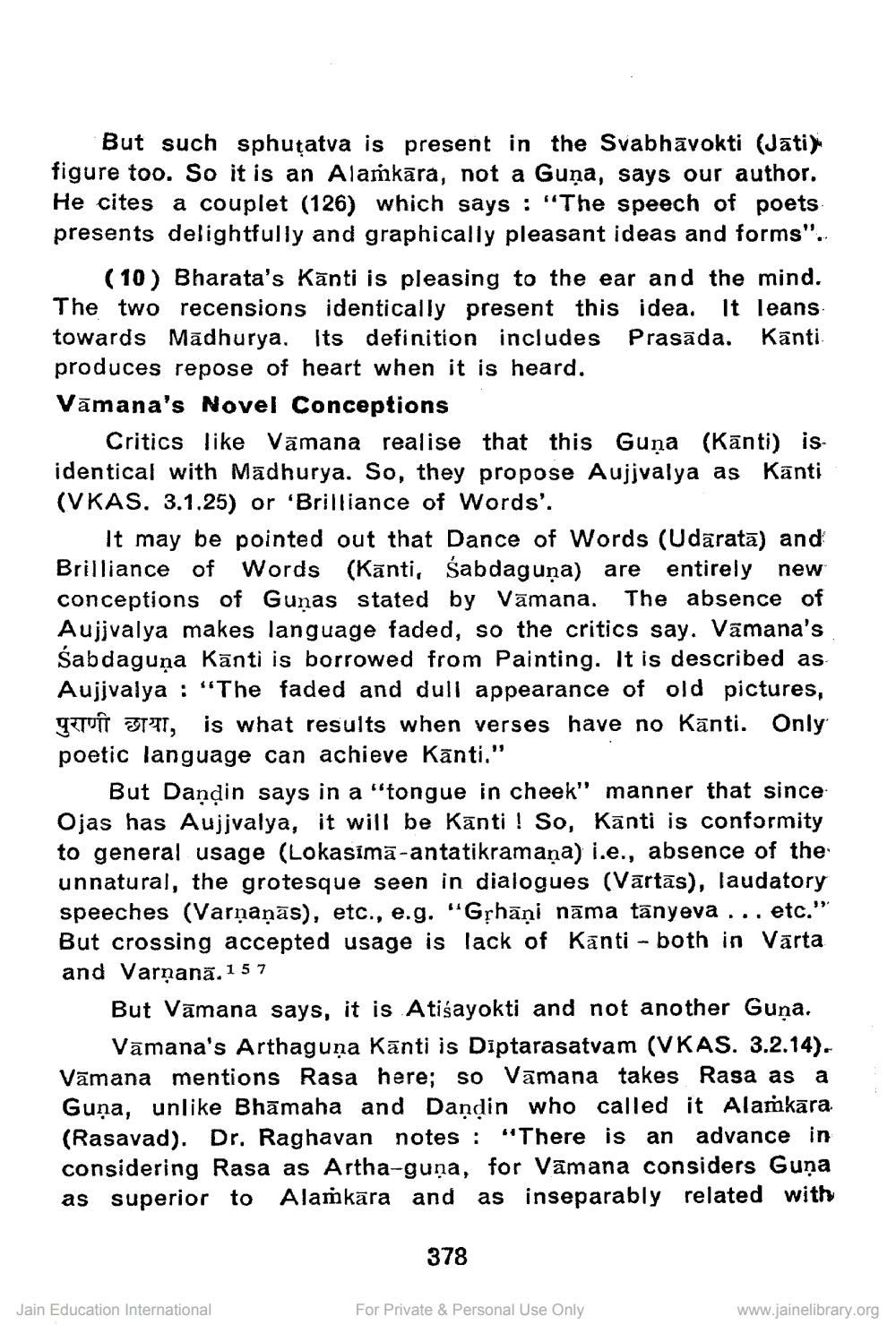________________
But such sphuţatva is present in the Svabhāvokti (Jāti). figure too. So it is an Alamkāra, not a Guņa, says our author. He cites a couplet (126) which says : "The speech of poets presents delightfully and graphically pleasant ideas and forms".
( 10 ) Bharata's Kānti is pleasing to the ear and the mind. The two recensions identically present this idea. It leans towards Mādhurya, its definition includes Prasāda. Kanti produces repose of heart when it is heard. Vāmana's Novel Conceptions
Critics like Vāmana realise that this Guņa (Kānti) isidentical with Madhurya. So, they propose Aujjvalya as Kānti (VKAS, 3.1.25) or ‘Brilliance of Words'.
It may be pointed out that Dance of Words (Udaratā) and Brilliance of Words (Kānti, śabdaguņa) are entirely new conceptions of Guņas stated by Vāmana. The absence of Aujjvalya makes language faded, so the critics say. Vamana's Śabdaguņa Kānti is borrowed from Painting. It is described as Aujjvalya : "The faded and dull appearance of old pictures, quî TAI, is what results when verses have no Kanti. Only poetic language can achieve Kanti."
But Dandin says in a "tongue in cheek" manner that since Ojas has Aujjvalya, it will be Kānti ! So, Kānti is conformity to general usage (Lokasimā-antatikramana) i.e., absence of the unnatural, the grotesque seen in dialogues (Vārtās), laudatory speeches (Varņaņās), etc., e.g. “Gșhāņi nāma tänyeva ... etc." But crossing accepted usage is lack of Kanti - both in Vārta and Varnanā. 157
But Vāmana says, it is Atiśayokti and not another Guņa.
Vāmana's Arthaguņa Kānti is Diptarasatvam (VKAS. 3.2.14). Vāmana mentions Rasa here; so Vamana takes Rasa as a Guņa, unlike Bhāmaha and Dandin who called it Alamkāra. (Rasavad). Dr. Raghavan notes : "There is an advance in considering Rasa as Artha-guņa, for Vāmana considers Guņa as superior to Alamkāra and as inseparably related with
378
Jain Education International
For Private & Personal Use Only
www.jainelibrary.org




